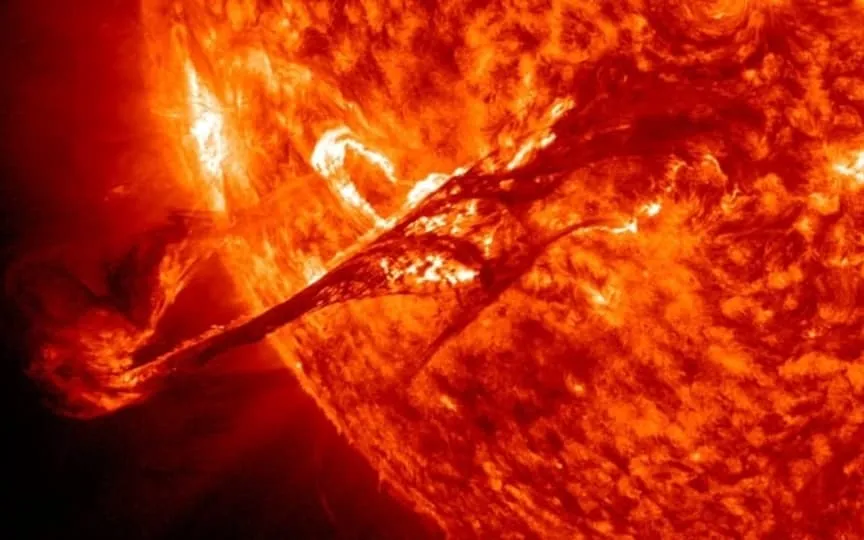NASA reveals massive M5-class solar flare on Sun causing blackouts on Earth, warns of impending solar storm
Today, December 9, the Earth once again takes center stage in the ongoing solar activity on the Sun, following yesterday’s focus on Mars. Recent data from NASA reveals that just four hours ago, a significant solar flare eruption occurred on Sunspot AR3511. This eruption, measuring M5.49, marks the most intense flare witnessed in the past three months. As a result, a short-wave radio blackout was experienced on Earth. Additionally, there is a possibility that the flare also released a coronal mass ejection (CME) cloud aimed at our planet. If this is the case, the Earth may encounter a powerful solar storm event within the next 2-3 days.
According to a SpaceWeather.com report, “Sunspot AR3511 erupted on December 8 (2307 UT), producing an M5-class solar flare and shortwave radio blackout in the South Pacific. CME may be on the way. Confirmation pending fresh data from SOHO coronagraphs.”
A massive solar flare explodes in the Sun
Space Weather Live’s official X account also confirmed the event in a message, highlighting that the R2 radio blackout was geo-effective in the Australia and New Zealand region. As a result, mariners, pilots, drone pilots, radio amateurs and emergency workers may have experienced interference with their communication systems.
Incidentally, this is the first Earth-directed solar flare since December 7, and it originates from the infamous Sunspot AR3511, which is now exiting Earth’s view. It is believed that future eruptions in the region are unlikely to affect our planet.
At this time, it is not possible to confirm the possibility of a solar storm or its intensity, as solar observatories are currently trying to assess whether a CME has been released. This should be done when the data is received by the NASA Solar and Heliospheric Observatory (SOHO). The data is then run in various space weather forecast models, which then tell us the probability of a solar storm in the coming days.
How NASA SOHO observes the Sun
NASA’s SOHO is a satellite launched on December 2, 1995. It is a joint project between NASA and the European Space Agency (ESA) to study the Sun, its atmosphere, and its effects on the Solar System. SOHO is equipped with 12 scientific instruments such as Extreme Ultraviolet Imaging Telescope (EIT), Michelson Doppler Imager (MDI), LASCO (Large Angle and Spectrometric Coronagraph) and others. SOHO takes pictures of the sun’s corona, measures speed and magnetic fields. of the sun’s surface and observes the faint corona around the Sun.




